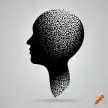Breaking the Habit of Being Yourself: Rewiring Your Brain for the Unthinkable..
Exploring the Mind's Labyrinth: Dr. Joe Dispenza's Odyssey of Transformation

n the labyrinthine corridors of human consciousness, lies a proposition both audacious and profound: to break the habit of being yourself. A notion that challenges the very foundations of identity, and beckons one to explore the intricate tapestry of the brain's circuitry. Rewiring, as it were, the machinery of thought, emotion, and action to ignite the fires of motivation and transformation. This journey delves deep into the realms where science meets spirituality, where the mind molds reality, and where the self is both prisoner and liberator.
In the realm of modern neuroscience, the pioneering work of Dr. Joe Dispenza emerges as a beacon, guiding us through the corridors of possibility. His teachings are a symphony of ancient wisdom and cutting-edge science, an exquisite interplay between the cerebral and the esoteric. Drawing from disciplines as diverse as quantum physics and meditation, Dr. Dispenza propounds a revolutionary philosophy: that the mind is not a passive vessel, but an active architect of reality.
At the heart of Dr. Dispenza's approach is the understanding that our habitual thoughts and emotions are not mere ephemeral experiences, but tangible forces shaping the brain's structure. The brain, in its remarkable plasticity, adapts to these patterns, weaving them into the very fabric of our neural pathways. But herein lies the crux of transformation: if the mind can be sculpted by thought, it can be reshaped by intention.
The process of breaking the habit of being oneself entails dismantling the neural scaffolds of limiting beliefs and self-sabotaging behaviors. This endeavor is no mere intellectual exercise; it is an alchemical endeavor that demands active engagement with one's thoughts, emotions, and intentions. Through meditation, visualization, and conscious awareness, individuals step into the realm of the quantum, where thoughts and intentions transcend the boundaries of time and space.
One of Dr. Dispenza's most intriguing concepts is the concept of "neuroplasticity," the brain's capacity to reorganize and rewire itself in response to experience. This phenomenon underscores the idea that our brains are not immutable structures, but dynamic and malleable entities. By engaging in practices that challenge the status quo of thought patterns, individuals embark on a journey of neuronal metamorphosis.
Yet, the process of rewiring the brain goes beyond neuroplasticity; it ventures into the realms of epigenetics and consciousness itself. Dr. Dispenza's teachings delve into the connection between thoughts and emotions and their impact on the expression of genes. The implications are staggering: by altering the mind's landscape, we can potentially modify the very blueprint of our biology.
The journey, however, is not without its challenges. The terrain of the mind is complex and labyrinthine, and the habit of being oneself is deeply ingrained. Yet, this very complexity is an invitation to explore the uncharted recesses of consciousness. Dr. Dispenza's techniques encourage individuals to observe their thoughts and emotions without judgment, to become the witness of their own internal landscape. This detachment allows for the emergence of new patterns, where intention takes the reins from habit.
In the realm of motivation, this practice becomes transformative. The fires of motivation are kindled by the alignment of intention and emotion. When individuals visualize their desired outcomes with fervor and passion, they imprint these visions onto the malleable canvas of the brain. This resonance between mind and emotion propels them into inspired action, turning aspirations into tangible realities.
The notion of breaking the habit of being yourself is not a call to renounce one's identity or past experiences. Rather, it is an invitation to transcend the limitations of habitual thought patterns that no longer serve us. In a world where change is the only constant, the ability to rewire the brain becomes a potent tool for adaptation and evolution.
As the ancient mystics understood, the mind is the canvas upon which reality is painted. In the realm of quantum physics, this understanding finds resonance: the observer shapes the observed. Dr. Joe Dispenza's teachings bridge these realms, offering a bridge between ancient wisdom and modern science. The habit of being oneself can be transformed into the art of becoming one's potential.
In conclusion, the journey of breaking the habit of being yourself is a voyage into uncharted territories, a pilgrimage through the intricate landscapes of thought and emotion. It is a testament to the limitless potential of the human mind, where intention becomes the compass guiding us through the labyrinth. By rewiring our brain's architecture, we rewrite the narrative of our lives, creating stories of transformation and empowerment.
And now, to lighten the tapestry of contemplation with a touch of British humour:
Why did the British computer go to therapy? Because it had too many bytes of emotional baggage!
About the Creator
Anjum Shahzad
Anjum Shahzad, a British-born enthusiast of sport and seeker of lively discourse. A soul who finds joy in both cheering matches and sparking spirited debates. Jolly good fellow!






Comments
There are no comments for this story
Be the first to respond and start the conversation.